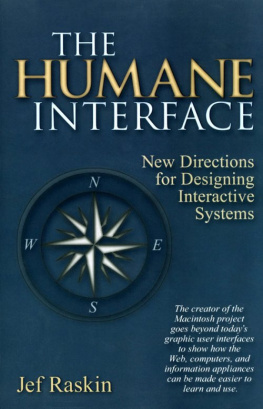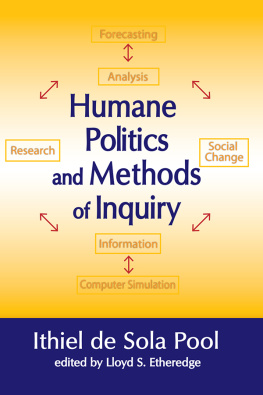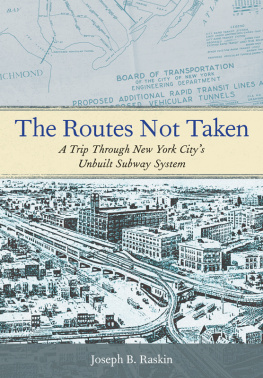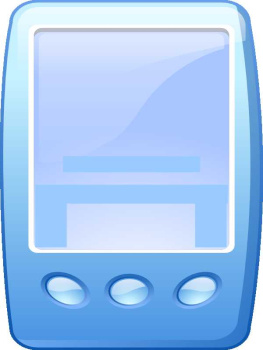Jef Raskin - The Humane Interface
Here you can read online Jef Raskin - The Humane Interface full text of the book (entire story) in english for free. Download pdf and epub, get meaning, cover and reviews about this ebook. year: 2000, publisher: Addison Wesley, genre: Computer. Description of the work, (preface) as well as reviews are available. Best literature library LitArk.com created for fans of good reading and offers a wide selection of genres:
Romance novel
Science fiction
Adventure
Detective
Science
History
Home and family
Prose
Art
Politics
Computer
Non-fiction
Religion
Business
Children
Humor
Choose a favorite category and find really read worthwhile books. Enjoy immersion in the world of imagination, feel the emotions of the characters or learn something new for yourself, make an fascinating discovery.
- Book:The Humane Interface
- Author:
- Publisher:Addison Wesley
- Genre:
- Year:2000
- Rating:3 / 5
- Favourites:Add to favourites
- Your mark:
- 60
- 1
- 2
- 3
- 4
- 5
The Humane Interface: summary, description and annotation
We offer to read an annotation, description, summary or preface (depends on what the author of the book "The Humane Interface" wrote himself). If you haven't found the necessary information about the book — write in the comments, we will try to find it.
The Humane Interface — read online for free the complete book (whole text) full work
Below is the text of the book, divided by pages. System saving the place of the last page read, allows you to conveniently read the book "The Humane Interface" online for free, without having to search again every time where you left off. Put a bookmark, and you can go to the page where you finished reading at any time.
Font size:
Interval:
Bookmark:
"Deep thinking is rare in this field where most companies are glad to copy designs that were great back in the 1970s. The Humane Interface is a gourmet dish from a master chef. Five mice!"
-Jakob Nielsen, Nielsen Norman Group
Author of Designing Web Usability: The Practice of Simplicity
This unique guide to interactive system design reflects the experience and vision of Jef Raskin, the creator of the Apple Macintosh. Other books may show how to use today's widgets and interface ideas effectively. Raskin, however, demonstrates that many current interface paradigms are dead ends, and that to make computers significantly easier to use requires new approaches. He explains how to effect desperately needed changes, offering a wealth of innovative and specific interface ideas for software designers, developers, and product managers.
The Apple Macintosh helped to introduce a previous revolution in computer interface design, drawing on the best available technology to establish many of the interface techniques and methods now universal in the computer industry. With this book, Raskin proves again both his farsightedness and his practicality. He also demonstrates how design ideas must be built on a scientific basis, presenting just enough cognitive psychology to link the interface of the future to the experimental evidence and to show why that interface will work.
Raskin observes that our honeymoon with digital technology is over: We are tired of having to learn huge, arcane programs to do even the simplest of tasks; we have had our fill of crashing computers; and we are fatigued by the continual pressure to upgrade. The Humane Interface delivers a way for computers, information appliances, and other technology-driven products to continue to advance in power and expand their range of applicability, while becoming free of the hassles and obscurities that plague present products.
We are oppressed by our electronic servants.
This book is dedicated to our liberation.
I don't know what percentage of our time on any computer-based project is spent getting the equipment to work right, but if I had a gardener who spent as much of the time fixing her shovel as we spend fooling with our computers, I'd buy her a good shovel. At least you can buy a good shovel.
Erasmus Smums
Creating an interface is much like building a house: If you don't get the foundations right, no amount of decorating can fix the resulting structure. The Humane Interface reexamines the cognitive foundations of human-machine interaction to elucidate a crucial aspect of why interface designs succeed or fail. One finding is that present-day graphical user interfaces, such as those of the Windows and Macintosh operating systems, which are based on an architecture of operating system plus application programs, are inherently flawed. A different approach is required if computers are to become more pleasant and if users are to become more productive. This book describes some of the fundamental flaws in user interfaces and describes solutions for overcoming those flaws.
Although the techniques covered in The Humane Interface apply to a wide range of productsincluding web sites, application software, handheld personal data managers and other information appliances, and operating systemsthis book does not present a survey of the field of human-machine interface design. Rather, this book strikes out in new directions while also reviewing those established parts of interface design that are needed in the development of the new material.
If we are to surmount the inherent problems in present human-machine interfaces, it is necessary that we understand the teachings of this volume; it is not, however, sufficient. Many important aspects of interaction design are not included here because they are well covered in the literature. This book is intended to complement existingor to be a prolegomenon to futuretreatments of interface design.
The audience for this book includes
Web designers and managers who want to give their sites a special ease of use that appeals to audiences and helps customers to find the information they need and to buy what they want
Product designers and product managers who need to be able to create web sites or products that will win and retain customers by offering ease of use and ready learnability and by having a first-rate feature set
Corporate managers who correctly insist on making products that have low maintenance and that reduce the need for help desks
Programmers who do interface designand who doesn't these days?and who want to understand more of the factors that make their work most useful
IT (information technology) managers who need to know which interface features will minimize their costs for training and which interface designs are likely to aid productivity
Consumers who want to learn what to hope for in terms of pleasant interaction with computers and other equipment, and what is wrong with the way today's software is designed
Computer science and cognitive psychology students who want to understand what lies behind heuristics of interface design
Finally, this book is for human-machine interface researchers, who may find that they will never again be able to view interfaces in quite the same way they did before reading The Humane Interface.
Friendly counsel cuts off many foes.
William Shakespeare (King Henry VI, Act III, Scene 1)
To list those who have helped is difficult, because they are so numerous, and the debt is so enormous. Many friends, colleagues, relations, reviewers, and some generous strangers I know only via the Internet have contributed ideas, critiques, suggestions, and detailed editorial work. Please forgive (and inform) me if you've helped and I've left you out or gotten your name or title wrong.
Thanks to the groups at Addison Wesley Longman, whether editors, designers, in PR, marketing, or whatever, all of whom seem to have been chosen not only for their competence, but also for their friendliness and forbearance. On the other hand, the anonymous reviewers they chose were merciless, for which I am also grateful.
Among the following list are friends, acquaintances, colleagues, my brother, my son's horn teacher, a fellow model airplane enthusiasta seemingly unlikely lot. Only a few are experts in human-computer interface design, but all have read my manuscript and made essential contributions to the book or have contributed over the years to its concepts: David Alzofon (who also drew Quasimodo), Bill Atkinson, Thomas Atwood, Paul Baker, Jerry Barenholtz, John Bumgarner, David Caulkins, William Buxton, Ph.D., Renwick Curry, Ph.D., Robert Fowles, Josh Garrett, Ph.D., Jean-Franois Groff, Scott Kim, Ph. D., Kathleen Mandis, Pamela Martin, Troy May, Miriam Meisler, Ph.D., Douglas McKenna, Michael S. Miller, David Moshal, M.D., Andrew Nielsen, Jakob Nielsen, Julie Ososke, Ian Patterson, Michael Raskin, Ph.D., Erasmus Smums, Spider Robinson, Minoru Taoyama, Shay Telfer, Yesso Tekerian, Bruce Tognazzini, David Wing, Terry Winograd, Ph.D., the local chapter (BayCHI) of the ACM's Special Interest Group in Computer-Human Interaction, which has let me preach and debate my theses, and the students at the Center for Computer Research in Music and Acoustics at Stanford University and its director, John Chowning.
I am lucky to have a literate as well as a loving wife, Linda Blum, R.N., who has never cared that writing a technical book is no way to support a family, so long as it was a worthy endeavor. Her attention to the ideas, direction, and details of this book have improved many a page. I can take no credit in choosing my parents, but they deserve much credit for teaching me to value people over things and to relish the arts as well as the sciences, choices that lead directly to this work. My son Aza contributed far beyond what you'd expect from someone of his youth, including ideas, editing, and hard work on the illustrations. He and his sisters were amazingly patient with me as I wrote. Especially important in my life is L. Roland Genise, my best teacher, who, during high school, gave me the twin gifts of intellectual self-confidence and a love of mathematics. Among those who have shared warm friendship, philosophy, and music, and who have been devastating editors of my earlier works, I am lucky to be able to name Brian Howard and Douglas Wyatt. I have disagreed with a few details of the writings of Dr. Donald Norman in this book, but these are minor points as I regard his work as essential reading in the field; without his critiques and teachings this book would not have come about. I am grateful to Bill Verplank, a quiet and agreeable sort whose comments are delivered so gently that you don't realize the rug's been pulled out until you hit the floor. His was one of the voices that convinced me to completely change the tone and orientation of the book, for the better. Another who hammered this book into shape was Lyn Dupr, a fierce and nitpicking professional editor. She wrote
Next pageFont size:
Interval:
Bookmark:
Similar books «The Humane Interface»
Look at similar books to The Humane Interface. We have selected literature similar in name and meaning in the hope of providing readers with more options to find new, interesting, not yet read works.
Discussion, reviews of the book The Humane Interface and just readers' own opinions. Leave your comments, write what you think about the work, its meaning or the main characters. Specify what exactly you liked and what you didn't like, and why you think so.











